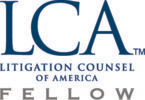Among other things, the Americans with Disabilities Act (ADA) ensures not only building access for people with disabilities but also access to outdoor developed areas such as trails, camping and picnic facilities, viewing areas, and beaches. The Architectural and Transportation Barriers Compliance Board, an independent federal agency created in 1973, develops the guidelines that establish design requirements for the construction and alteration of facilities subject to the law known as the ADA Accessibility Guidelines (ADAAG). These enforceable standards apply to places of public accommodation, commercial facilities, and state and local government facilities. The guidelines are used by the Department of Justice (DOJ) and the Department of Transportation (DOT) to set enforceable standards that the public must follow.
Under the ADA and several other laws, the Access Board develops guidelines and standards for the built environment, transportation systems, information and communication technologies, and medical diagnostic equipment. These guidelines include the:
ADA Accessibility Guidelines for Buildings and Facilities
ADA Accessibility Guidelines for Transportation Vehicles
Architectural Barriers Act (ABA) Accessibility Guidelines
Electronic and Information Technology Accessibility Standards (Section 508)
Telecommunications Act Accessibility Guidelines
Medical Diagnostic Equipment Accessibility Standards







